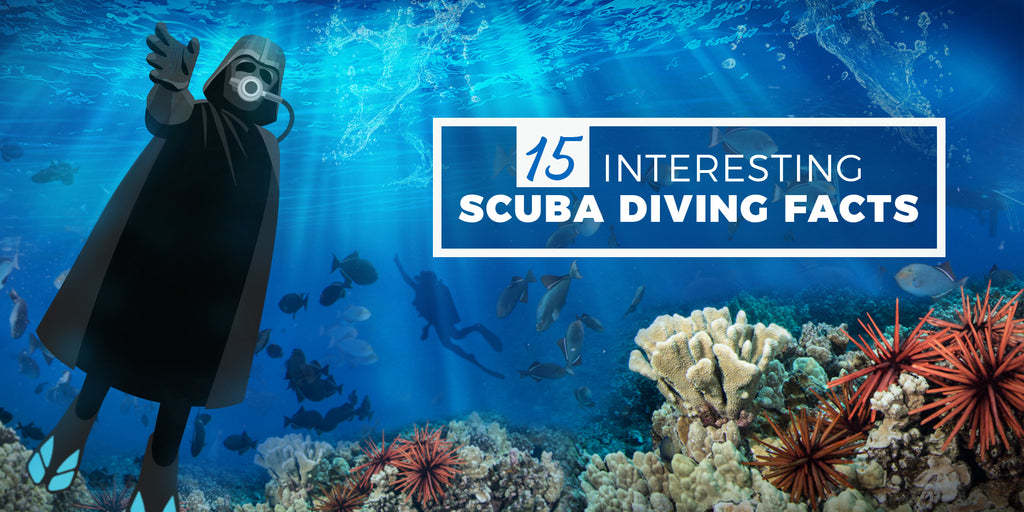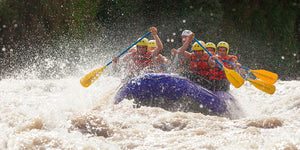Take Your Mind Off Winter - 15 Interesting Scuba Diving Facts

Escape the holiday rush and chilly winter weather with warm thoughts about the sun, sea, and scuba diving. As one of the world’s most popular watersports, scuba diving offers an underwater world full of discovery and adventure. There are so many reefs to explore and new creatures to uncover. If you’ve never thought about scuba diving before, now would be a good time to start. You’ll be surprised at all the things you will learn. Scuba divers often become experts on everything from the world’s geography to basic physics. This is the perfect time of year to start planning your next vacation. Why not make it a scuba diving adventure?
Take a moment away from the holiday hustle. Go grab a cup of coffee and enjoy these interesting tidbits about scuba diving and the ocean.
- The term “scuba” dates back to World War II and stands for “self-contained underwater breathing apparatus”.
- Water absorbs light, so colors start to disappear the deeper you dive. Red starts to disappear at about 15 feet, which is why blood appears green underwater at certain depths. Orange is the next color to disappear at about 25 feet, followed by yellow at 35-45 feet, and green at 70-75 feet.
- In 2014, Ahmed Gabr of Egypt entered the Guinness World Records for deepest scuba dive (male) by diving to a depth of 332.35 meters (1,090 feet, 4.5 inches) in the Red Sea of Dahab, Egypt.
- Most of Earth’s oxygen comes from tiny ocean plants.
- The Great Barrier Reef off the coast of Queensland, Australia is the world's largest coral reef system composed of more than 2,900 individual reefs and 900 islands stretching more than 2,600 kilometers (1,615 miles) in the Coral Sea.
- Only 5% of the ocean floor has been explored, according to the National Ocean Service.
- In 1942, Émile Gagnan and Jacques Cousteau invented the Aqua-Lung, the first open-circuit, scuba gear to achieve commercial success. This equipment is now commonly referred to as a diving regulator or demand valve.
- Studies estimate there are more than 230,000 documented marine species, with nearly two million marine species yet to be identified.
- The sound designer for the original Star Wars trilogy used a scuba tank regulator to create Darth Vader’s famous mechanical breathing.
- Sunlight may travel about 1,000 meters (3,280 feet) into the ocean under the right conditions, but there’s rarely any significant light beyond 200 meters (656 feet), according to the National Ocean Service. Most of the ocean is completely dark at this depth.
- More than 70% of the Earth’s surface is covered by water.
- Challenger Deep is the deepest part of the ocean at more than 10,898 meters (35,755 feet) in the Pacific Ocean, at the southern end of the Mariana Trench.
- Estimates are that less than 1% of the ocean floor is covered by coral reefs, yet more than 25% of ocean species depend on reefs for food and shelter.
- Sound travels about four times faster underwater than it does through air, making it difficult for scuba divers to determine which direction the sound is coming from.
- Non-divers often think divers carry pure oxygen tanks, yet most recreational scuba diving cylinders contain ordinary surface air composed of 78% nitrogen and 21% oxygen.
Now that you’re inspired to go diving, pick your favorite place and make it happen. There are thousands of great dive sites around the world or even right around the corner. You don’t have to fly to Indonesia or Australia to find interesting places to dive. Local beaches offer some of the nicest places to explore. No matter where you are, you can experience the amazing underwater world of scuba diving.
- Watersports Staff






Comments 0